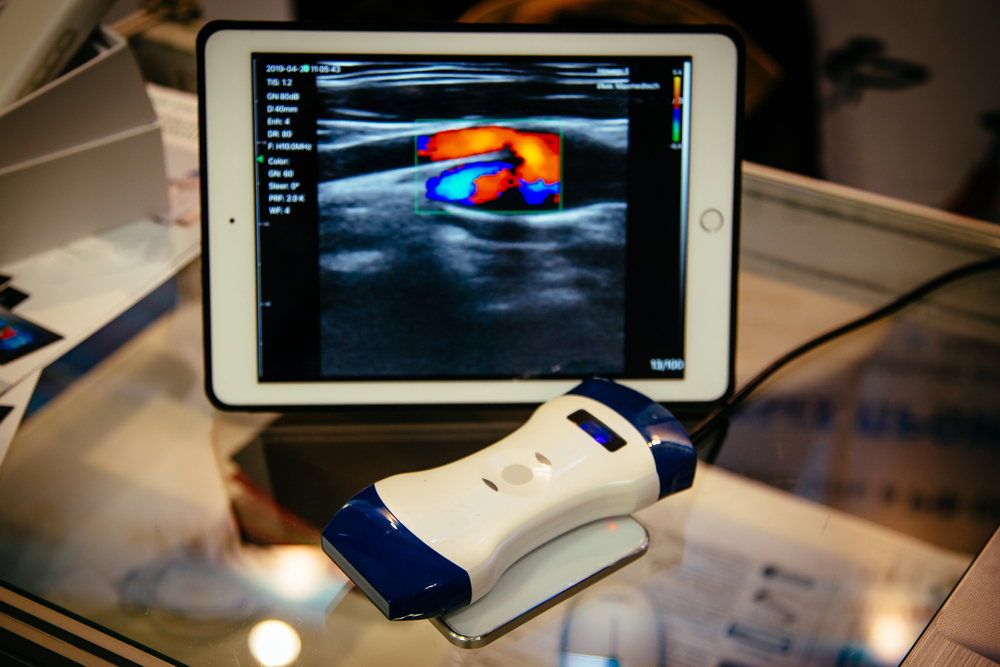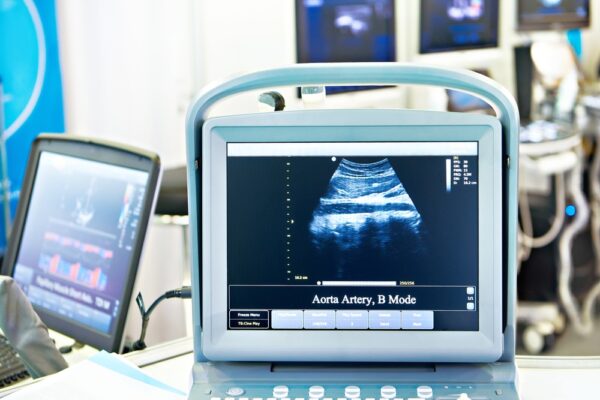Quality Assurance in Ultrasound: New PoCUS Technology — and New Questions
 The rise of handheld point-of-care ultrasound (POCUS) devices has introduced new possibilities in medical diagnostics. But with their widespread adoption comes an important and often overlooked question: How will quality assurance in ultrasound technology look for PoCUS devices?
The rise of handheld point-of-care ultrasound (POCUS) devices has introduced new possibilities in medical diagnostics. But with their widespread adoption comes an important and often overlooked question: How will quality assurance in ultrasound technology look for PoCUS devices?
As handheld PoCUS devices become more prevalent, questions surrounding their clinical accuracy and the need for robust quality assurance practices have become urgent. Authorities such as the American Institute of Ultrasound in Medicine (AIUM) and the World Federation of Ultrasound for Medicine and Biology (WFUMB) have already begun discussions on how to address these challenges.
Defining quality assurance in ultrasound for PoCUS
Quality assurance is a key component in maintaining the diagnostic accuracy of any ultrasound system, and handheld PoCUS devices are no exception. Unlike conventional ultrasound systems used by trained sonographers, handheld PoCUS devices are often used by general practitioners, emergency responders, or even non-medical personnel. These users may lack formal ultrasound training, which raises several critical questions regarding device performance and quality standards:
- How can users ensure their handheld PoCUS devices provide reliable diagnostic images over time?
- What objective measures or quality assurance in ultrasound device performance can be applied to PoCUS?
- Should new QA protocols be developed specifically for handheld PoCUS devices based on their intended clinical applications?
Handheld ultrasound devices must undergo the same rigorous quality assurance standards as traditional systems, especially given their increasing role in clinical decision-making. Without stringent QA protocols, we risk compromising patient safety and diagnostic outcomes.
 Challenges of quality assurance in ultrasound for PoCUS
Challenges of quality assurance in ultrasound for PoCUS
While handheld PoCUS devices offer portability and ease of use, they also introduce challenges not typically encountered in conventional ultrasound systems. They also introduce unique challenges that quality assurance in ultrasound hasn’t historically faced:
- Compact size and simplified design: Handheld PoCUS devices are designed to be compact, but this raises questions about their ability to consistently deliver high-quality images over time.
- Multiple clinical applications: Handheld devices are often cleared by the FDA for multiple clinical uses, but each use has specific imaging requirements. For example:
- Abdominal scans require broader anatomical views.
- Cardiac assessments need detailed imaging of fine structures.
- Musculoskeletal evaluations depend on comprehensive evaluations that often involve movement of joints to develop treatment plans.
Each application requires a distinct set of performance metrics. The challenge is that handheld devices may not be optimized for all intended uses, raising concerns about the consistency of their performance across various clinical settings.
Objective QA testing for handheld PoCUS devices
When we talk about quality assurance in ultrasound, the conversation must shift toward objective measurements and quantitative testing that validate a device’s performance. For handheld PoCUS devices, this means evaluating parameters such as resolution, frame rate, penetration depth, and image uniformity. Testing tools such as tissue-mimicking phantoms are essential in this regard. Phantoms provide a controlled environment for assessing the diagnostic quality of ultrasound images by simulating human tissue characteristics.
There is no current consensus on which QA tests are most relevant for handheld PoCUS devices. Should we apply the same metrics used for high-end, cart-based systems, or should new QA benchmarks be developed? For example, a handheld device used in emergency settings for cardiac assessments requires different performance metrics than one used for abdominal imaging. The lack of standardized QA protocols means users may unknowingly rely on suboptimal devices for critical diagnoses.
This gap in QA requirements is concerning, given the growing reliance on PoCUS in frontline healthcare. Objective performance validation, including testing for probe sensitivity and calibration, should be a priority for manufacturers, regulators, and healthcare institutions alike. As G. Wayne Moore — Founder and Partner at Acertara — pointed out in a recent newsletter, “A Swiss Army Knife™ comes with a multiplicity of blades and tools — they can do a lot of things, but not necessarily well.”
 Emerging tools for quality assurance in ultrasound
Emerging tools for quality assurance in ultrasound
In response to the growing demand for handheld PoCUS devices, companies like Acertara are exploring specialized testing tools and methodologies to address the need for application-specific quality assurance:
- Phantoms tailored for portable devices: We’re actively engaged in creating phantoms and automated testing systems designed to address the requirements of portable ultrasound devices. These tools help users assess the imaging capabilities of their devices and ensure that they meet the necessary clinical standards.
- Automated testing systems: Automated, real-time QA systems integrated directly into ultrasound devices could alert users when performance metrics fall below acceptable thresholds. Such advancements could prevent diagnostic errors by ensuring any issues are detected and addressed early.
We expect regulatory bodies such as the FDA to release new guidelines for quality assurance in ultrasound next year. These guidelines will likely focus on handheld devices, given their growing role in various clinical environments. These guidelines should cover:
- Performance validation
- Equipment maintenance
- Routine testing protocols
Acertara: Leading quality assurance in ultrasound
As the use of handheld PoCUS devices expands, so must our approach to their quality assurance. Relying solely on FDA clearance without ongoing performance monitoring is insufficient for ensuring patient safety. The challenge lies in developing QA protocols that account for the specific needs of handheld devices while maintaining the rigorous requirements for clinical diagnostics.
Moving forward, healthcare providers must prioritize quality assurance in ultrasound by implementing regular performance checks and utilizing objective testing tools. As new guidance emerges, the medical community will be better equipped to ensure that handheld PoCUS devices meet the diagnostic demands of diverse clinical applications.

 Challenges of quality assurance in ultrasound for PoCUS
Challenges of quality assurance in ultrasound for PoCUS Emerging tools for quality assurance in ultrasound
Emerging tools for quality assurance in ultrasound